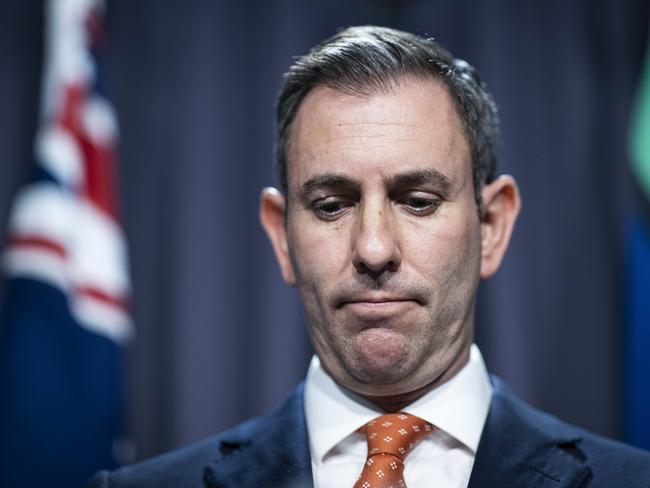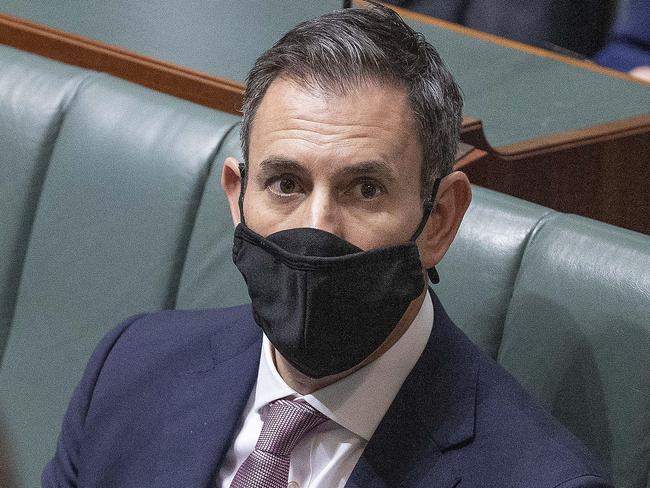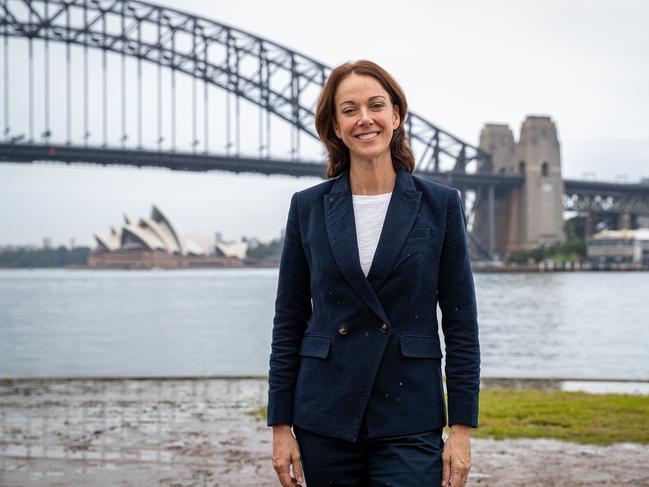Inflation spikes to 6.1 per cent as Aussies feel more cost of living pain
Australians are continuing to feel the squeeze with the latest data showing we now have the biggest inflation rate in two decades.
NewsWire
Don't miss out on the headlines from NewsWire. Followed categories will be added to My News.
Inflation has soared to a massive 6.1 per cent annually, which has been described as “confronting” and “alarming”.
New dwellings (+20.3 per cent) and automotive fuel (+32.1 per cent) have been identified as the major contributing factors by the Australian Bureau of Statistics.
ABS head of prices statistics Michelle Marquardt said it was the largest increase since the introduction of the GST.
“Annual price inflation for new dwellings was the strongest recorded since the series commenced in 1999,” she said.
It has led Treasurer Jim Chalmers to describe the situation as “confronting”, while Australian Chamber of Commerce and Industry chief executive Andrew McKellar said it was an “alarming”.
Mr Chalmers went on to say that many Australian households were being forced to choose between vegetables and rent after the latest inflation rise.


“Maybe in the first instance people started winding back on discretionary items — Netflix or something like that ... but it comes to a point when people are trying to work out what’s left to substitute out,” he told reporters.
“I think that’s the practical demonstration of what’s happening here because at some point the most vulnerable people are making decisions between vegetables or rent, and that’s when it really bites.”
Mr Chalmers said commentary about people having buffers in their homes loans wrongly assumed that interest rate rises and inflation were not already hurting people.
“For every dollar that people find to service their mortgages, every extra dollar, it means a dollar that can’t go to funding the skyrocketing costs of other essentials,” he said.
“So I think we need to take a broad view about the impact of inflation on the economy but also on the most vulnerable Australians.
“A lot of people are living pay cheque to pay cheque, for whom this inflation will be devastating, because it’s getting harder and harder for them to substitute things out of their household budgets.”

The Consumer Price Index rose 1.8 per cent in the June quarter — the second highest since the introduction of the GST, following the 2.1 per cent increase last quarter.
“Shortages of building supplies and labour, high freight costs and ongoing high levels of construction activity continued to contribute to price rises for newly built dwellings,” Ms Marquardt said.
“Fewer grant payments made this quarter from the Federal Government’s HomeBuilder program and similar state-based housing construction programs also contributed to the rise.
“The CPI‘s automotive fuel series reached a record level for the fourth consecutive quarter. Fuel prices rose strongly over May and June, following a fall in April due to the fuel excise cut.”
Mr Chalmers said inflation was high and rising, while global growth was slowing.
“Both of these things have a direct impact on Australians and their living standards,” he told reporters.
“We are not surprised to see inflation north of six per cent, but it’s still confronting.
“It’s not news to millions of Australians who feel this inflation challenge every time they go to the supermarket and every time that bills arrive.
“This inflation outcome today mirrors the lived experience of Australians who are doing it tough right now.”
Mr Chalmers noted it was the highest rate of annual inflation since June 2001.
“It is the equal highest inflation in the inflation targeting period,” he said.
“Inflation is high and rising. It will get tougher before it starts to ease.
“The reality is the quarterly outcome does not yet include the electricity price spike that came in in July.”

Mr McKellar said it was an “alarming” new peak in consumer price growth.
“The impacts of an energy price spike, supply chain bottlenecks due to Covid-19 and the war in Ukraine, and acute workforce shortages, have driven price increases around the world and Australia is no exception,” he said.
“Inflation, which has been low for more than a decade, did not suddenly rise in recent months because businesses decided now was the ideal time to squeeze their customers.
“The reality is businesses are absorbing cost increases where they can. But, with inflation continuing to sting employers, higher consumer prices will persist in the months ahead.
“Coupled with the unexpectedly sudden fall in the unemployment rate to 3.5 per cent, it’s all but certain that the Reserve Bank will further tighten monetary policy at their August board meeting next week.
Shadow Treasurer Angus Taylor said Labor promised cost of living relief during the election campaign but was now telling struggling families to wait.
“Families are feeling it at the bowser, in the supermarket, when they pay their power bills and when they renovate their homes,” he said.

“Labor went to the election promising to ease the cost of living, reduce electricity costs and increase real wages, but it’s only getting harder for Australian households and the government has offered no real plan to address these challenges.
“We haven’t seen inflation this high in more than three decades. The government can make choices to address these pressures.”
Earlier on Wednesday, MP Sophie Scamps expressed displeasure with the continued rhetoric that Australians’ savings buffer would get people through the current cost of living crisis.
“It’s very concerning to households and families that the cost of living is such an issue and we’ve been dealing with it for a while now,” she told reporters in Canberra.
“There’s a lot of people out there who are struggling, particularly when you’ve got housing affordability, rent affordability, food prices going through the roof, transport costs, energy, fuel.”
Originally published as Inflation spikes to 6.1 per cent as Aussies feel more cost of living pain



